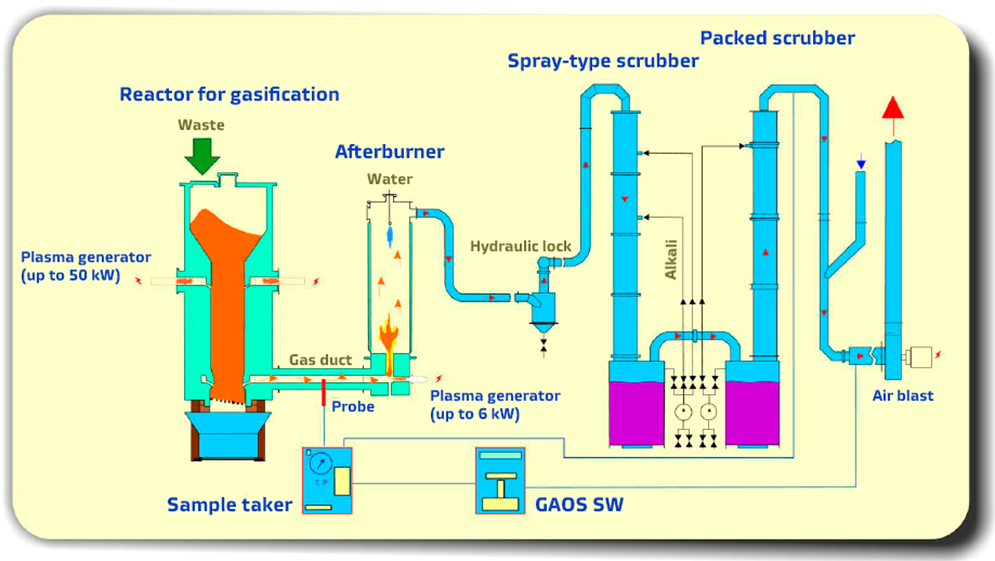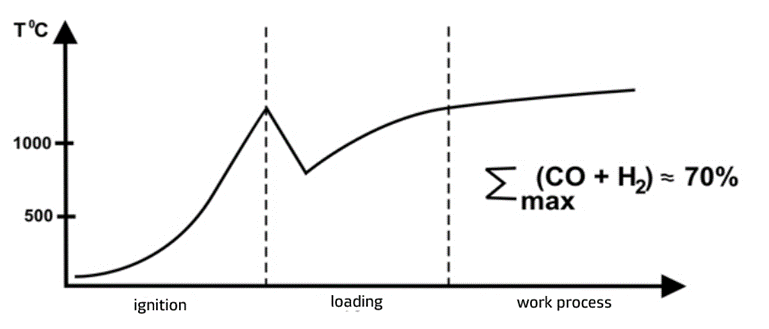-
Products
- Gas analysis systems
- GAOS SENSON gas analyzers
- GAOS MS process mass spectrometry
- MaOS HiSpec ion mobility spectrometer
- MaOS AxiSpec ion mobility spectrometer
- Applications
- News
- Events
- About us
|
The MS process mass-spectrometer provides real-time, fast, accurate, comprehensive gas analysis.
Operational characteristics:
Automatic algorithm of working with the functions of diagnostics, adjustment, calibration and operative control of measurements accuracy |
|

|
|
Mass-spectrometer GAOS MS-20-1 |
||

|
||
|
|
Depending on the analytical applications, the process mass spectrometers MS are equipped with various modifications of Sample Conditioning System.
SAMPLE CONDITIONING SYSTEM SPECIFICATIONS
Dust content up to 30 g/m3; Pressure (10-3÷3) bar; Presence of a condensate, aggressive gases;
|
|
METALLURGY
Basic Oxygen Steel process (converter);
Blast Furnace Optimization;
Steel Vacuum Processing (VOD, RH);
Air separation (analysis of blowing oxygen purity);
Emissions Monitoring and Pilot Plant Gas Analysis for non- ferrous metallurgy.
GEOLOGY
Mud Gas Logging;
Isotope Analysis;
Gas Measuring;
Fluid Inclusions Gas Analysis (geochemistry investigations).
OIL AND GAS INDUSTRY
LNG production;
Natural gas processing;
Hydro-cracking process;
High-temperature cracking furnace optimization;
Process of the catalyst regeneration;
The chemical analysis of technological gases: recycle hydrogen, fuel, inert.
ATOMIC ENERGY
Chemical and isotope analysis of H2-He-T2 fuel gas mixtures (International project "ITER" - experimental thermonuclear reactor);
Chemical and isotope analysis of gas phase of the fuel elements cover;
Monitoring of hydrogen and other gases migration during the atomic reactor stress testing.
HIGH-PURITY GAS PRODUCTION
ALTERNATIVE ENERGY
Plasma gasification of the solid waste with reception of synthesis-gas for power and chemical industry;
Optimize of hydrogen reformer and catalyst efficiency for fuel cells development and testing.
INVESTIGATIVE ANALYSIS
Monitoring of the gas phase for thermal, termogravimetric analysis;
The elemental analysis (C, N, O), quantity determination of the dissolved gases in metals;
Pilot plant gas analysis of the metallurgical processes.
Plasma and plasma-chemical technologies in the modern world find various applications in various branches and spheres of human activity from metallurgy and high-temperature synthesis of new substances to medicine - surgical operations with the help of a plasma scalpel, which provides cutting and restoring blood vessels simultaneously.
The study of plasma gasification of solid waste is an area of applied sciences where Russia holds the leading position in the world. According to F.G. Rutberg, Academician of the Russian Academy of Sciences, Director of the Institute of Electrophysics and Electric Power Engineering of the Russian Academy of Sciences, winner of the Global Energy international prize for 2011 - “In the world in 10-15 years of use, plasma is more than metallurgy and chemistry combined.”

Experimental installation of plasma gasification of solid waste at the Institute of Electrophysics and Power Engineering, St. Petersburg. In the foreground is a system for sampling and processing samples of a gas-analytical complex based on GAOS MS-20-1 mass spectrometer.
An experimental installation for plasma gasification of solid waste is being operated at the Institute of Electrophysics and Electric Power of the Russian Academy of Sciences. With the help of this experimental facility, technologies are being developed for processing various types of solid waste, the production of synthesis gas, which can be used in the power industry or as a raw material for the chemical industry.
The Installation of plasma gasification consists of following basic components: the reactor for gasification, generators of plasma with power supply systems, an afterburner, system of cooling and clearing of departing gases. High-voltage plasma generators of an alternating current of industrial frequency with capacity up to 50 kW and using the environment air for formation of plasma are applying.
The basic principle of the installation is as follows: high-temperature plasma gasification with the possible production of electricity or utilization of residual heat followed by a multi-stage flue gas cleaning in accordance with environmental protection standards.
Chemical reaction of the plasma gasification, process temperature 1200 – 1500 ⁰C:
(C, CxHy) + Air + H2O → H2 + CO + CO2 + N2 + O2 + H2O + Ar + CH4 + NOx + SO2 + H2S

The block diagram of the installation of plasma gasification of the solid waste with built-in the gas analysis complex on the basis of the GAOS MS-20-1 process mass spectrometer.
|
Parameters |
Value for different kinds of recycling waste |
||
|
Wood |
RDF* |
Waste of tires |
|
|
Specific heat of combustion, МJ/kg |
16 |
15 |
33 |
|
Consumption on the 1 kg of waste:
|
1,44 - |
1,51 - |
2,88 1.33 |
|
Power consumption, kW h/kg |
1,0 |
1,06 |
1,85 |
|
Mode of plasma generator, МJ/kg |
2,25 |
2,27 |
2,08 |
|
Plasma temperature, C |
1950 |
2000 |
1800 |
|
Specific output of synthesis-gas, m3/kg |
2,48 |
2,46 |
5,03 |
|
Component of synthesis-gas, % vol
|
24,5 31,4 3,5 4,9 35,7 |
26,3 27,5 3,2 4,9 37,8 |
30,6 24,0 5,2 4,9 35,1 |
|
Specific heat of gas combustion, МJ/m3 |
6,16 |
5,88 |
5,89 |
The installation of plasma gasification of solid waste allows us to simultaneously solve two problems: recycling of wood, coal, plastic, RDF, automobile tires and the production of energy from renewable sources (alternative energy).
The process of plasma gasification carried out at a temperature of more than 1200 ° C, avoids the appearance in the synthesis gas of liquid fractions (resins), which are formed in significant quantities at lower temperatures, which eliminates the need for their further processing. The high process temperature ensures complete destruction of toxic and hardly decomposable waste components and, in the presence of chlorine-containing components in the waste, eliminates the synthesis of secondary, especially toxic substances.
The resulting synthesis gas can be combusted in a gas boiler room and serve as a partial replacement for natural gas or be subjected to additional treatment (purification) for further use as a raw material in the chemical industry.
The gas analysis system based on the Ostec GAOS MS-20-1 process mass spectrometer, built into the installation of plasma gasification of solid waste, allows you to control the process, optimize operating parameters, monitor the overall performance of the exhaust gas cleaning system, monitor harmful emissions in the atmosphere.

Temperature variation with time during the operation of the installation of plasma gasification of solid waste
The determined components, the ranges of the measured concentration, the concentration of flue gases during plasma gasification (product gas) at the stage of the working process (stationary mode of operation of the installation)
|
Component |
Range of measured concentration, % vol. |
Concentration at the stationary operating mode, % vol. |
|
Hydrogen, H2 |
0,01÷50,0 |
25,0÷30,0 |
|
Carbon oxide, CO |
0,01÷50,0 |
25,0÷30,0 |
|
Nitrogen, N2 |
0,01÷80,0 |
35,0÷40,0 |
|
Carbon dioxide, CO2 |
0,01÷10,0 |
1,0÷5,0 |
|
Oxygen, O2 |
0,01÷25,0 |
1,0÷2,0 |
|
Argon, Ar |
0,01÷2,0 |
0,8÷1,0 |
|
Methane, CH4 |
0,01÷5,0 |
1,0÷2,0 |
|
Water, H2O |
0,1÷5,0 |
1,0÷5,0 |
|
Nitrogen oxides, NOX |
0,0005÷1,0 |
< 0,5 |
|
Sulfur dioxide, SO2 |
0,0005÷1,0 |
< 0,01 |
|
Hydrogen sulphid, H2S |
0,0005÷1,0 |
< 0,01 |
|
Sampling block:
|

|
|
|
Industrial rack for sample preparation and gas flow switching:
|
|
GAOS MS-20-1 process mass spectrometer:
|
|